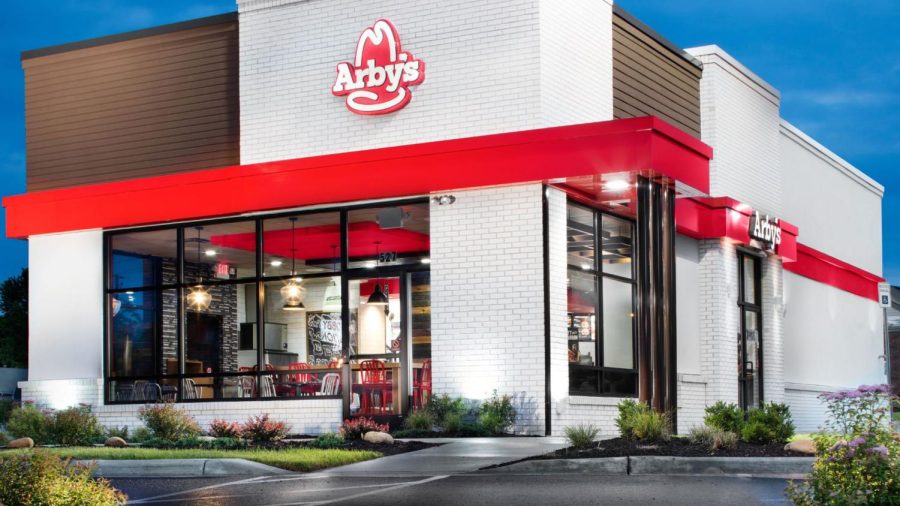The Jewish history of Arby’s
The original roast beef sandwich was actually served on a challah-esque bun.
Published August 7, 2022
“We have the meats.”
Ever wonder who the “we” is behind that Arby’s slogan? The answer is Forrest and Leroy Raffel, Jewish brothers from New Castle, Pennsylvania. While the Raffel brothers were certainly not the only Jewish creative giants in the American fast food industry (hat tip to tip Harry J. Sonneborn and Leonard and Myra Rosenblatt) their story is one that is particularly compelling in regards to its history of innovations.
Forrest and Leroy were born to Jewish immigrants Jacob and Anna Raffel in 1922 and 1927, respectively. Despite the sizable age gap between the two siblings, Forrest (nicknamed “Fuzzy”) and Leroy were close with similar interests. During WWII, Forrest served in the Air Force and Leroy fought in the Naval Reserve. Forrest then went on to graduate from the School of Hotel Management and Restaurant Administration at Cornell University while Leroy earned his business degree from the Wharton School at the University of Pennsylvania.
With their military experience and ivy league educations, the brothers were primed for professional success and immediately set their sights on becoming big names in food service. In the 1950s, Forrest and Leroy purchased a restaurant equipment company from their uncle, which they rebranded as Raffel Brothers, Inc., and eventually grew the business to become one of the largest of its kind in the nation.
Despite their early success, the brothers were not satisfied to rest their laurels on this accomplishment. Having observed how Ray Kroc of McDonald’s and others deployed the franchising model to achieve major success and rapid revenue, Forrest and Leroy decided to make a foray into the fast food industry.
On a hot Thursday in Boardman, Ohio in July of 1964, the brothers opened their first quick service restaurant, which they dubbed “Arby’s,” for their respective initials “R” and “B.”Ironically, the catchy name was not the brothers’ first choice; their original preferred moniker, “Big Tex,” was already taken by another chain.
The brothers’ choice for the chain to focus on roast beef over hamburgers was a calculated one. Forrest and Leroy wanted to position Arby’s as a tad more formal than other fast food chains, and thus opted for the more “sophisticated” roast beef sandwiches. They also made sure the menu included singular offerings like the “Jamocha shake,” a coffee-chocolate amalgam dessert beverage that remains one of the chain’s signature specialties to this day.
View this post on Instagram
Another aspect of the composition of the roast beef sandwich suggests a more deliberate nod to the brothers’ Jewish lineage. The original carbohydrate vehicle for the roast beef was a sesame seed egg bun designed by iconic kosher bakery Schwebel’s. Opened in 1906 in nearby Youngstown, Ohio, Schwebel’s was founded by Polish Jewish immigrants Dora and Joseph Schwebel and served a culinary beacon for the Jewish community and area restaurateurs. By appointing Schwebel’s challah-esque roll as the official bun for their roast beef sandwich, the Raffel brothers posted an indelible shout-out to their minority Jewish roots in the broader national Christian majority landscape.
Despite the fact that the sandwiches were significantly more expensive than the average burger (69 cents versus 15 cents at McDonald’s), consumers went crazy. Following the enormous success of their original location, the Raffel brothers embarked on an aggressive expansion plan and by the late 1960s, more than 300 Arby’s restaurants were spread out over 40 states across the country. It should be noted that behind the roast beef boon were not just two Jewish men but also a savvy Jewish woman: Gloria Raffel, wife of Forrest, designed what would become the chain’s iconic cowboy hat logo.
The rise of Arby’s presented problems as well as profit, as the company faced difficulties obtaining adequate loans and capital to support their expansion. Additional financial restructuring proved unsuccessful and resulted in the brothers having to file for bankruptcy multiple times. By the mid 1970s the continued growth (500 locations and counting) and increasingly complicated operational needs led Forrest and Leroy to realize their roast beef baby would not survive without outside help. In 1976, the brothers sold Arby’s to Royal Crown Cola for $18 million, though they stayed on as managers until 1979, ultimately growing the chain to 800 locations.
During the twilight years of the Raffel brothers’ leadership, Arby’s continued to be a pioneer with regards to developing uniquely craveable dishes like the “Beef ’n’ Cheddar” sandwich and seasoned curly fries. Such innovations enabled the unassuming brothers of humble Ohio origins to retire as multi-millionaires and established them as fast food royalty.
Today Arby’s famous slogan requires a well-deserved addendum: “We have the meats…at more than 3000 locations!” Favoring roast beef rather than burgers continues to pay off as the chain reported more than $4 billion in revenue at the turn of the 21st century. Although Forrest Raffel sadly passed away in 2008, Leroy is still alive and kicking at 96. Their mutual fraternal legacy as innovators in the fast food space is reflected in Arby’s continued commitment to bringing consumers out-of-the-box menu items. Most recently, the restaurant debuted the fiery “Diablo Dare” sandwich made with ghost pepper cheese, spicy sauce, and–wait for it–smoked brisket, perhaps proving once and for all that Arby’s is more than just a little bit Jewish.















